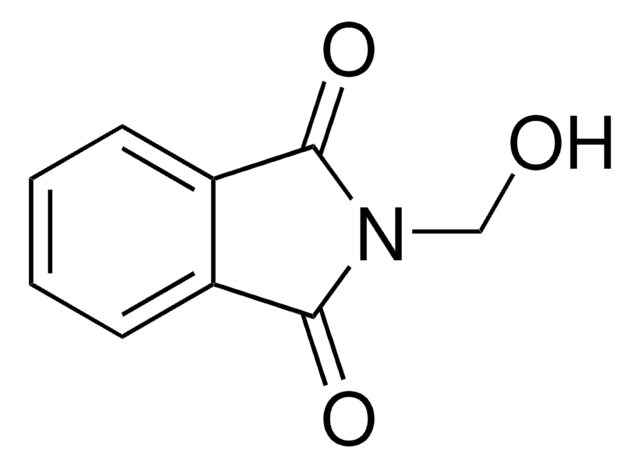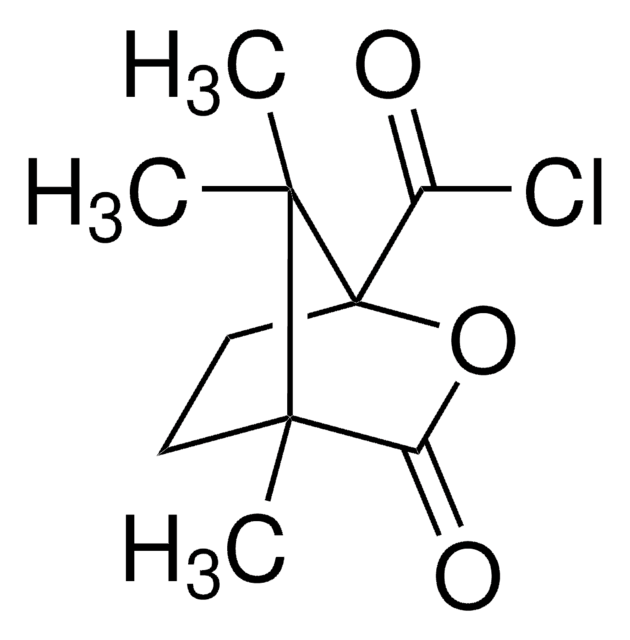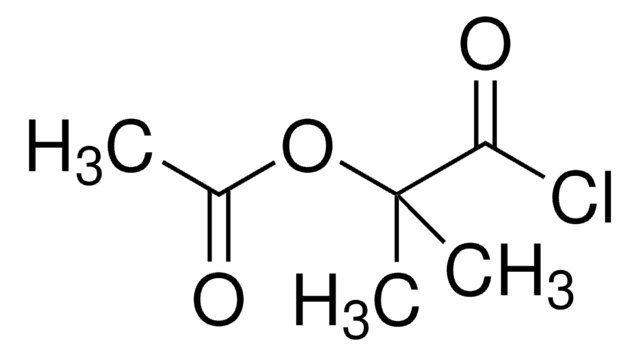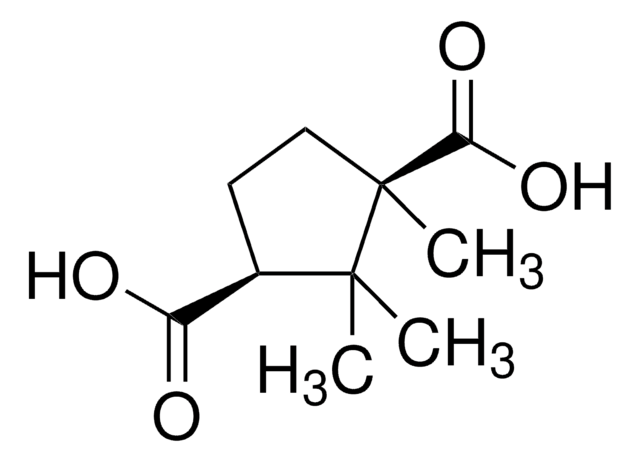422835
2-Chloro-N-(hydroxymethyl)acetamide
98%
Iniciar sesiónpara Ver la Fijación de precios por contrato y de la organización
About This Item
Fórmula lineal:
ClCH2CONHCH2OH
Número de CAS:
Peso molecular:
123.54
Número CE:
Número MDL:
Código UNSPSC:
12352100
ID de la sustancia en PubChem:
NACRES:
NA.22
Productos recomendados
Ensayo
98%
mp
100-105 °C (lit.)
cadena SMILES
OCNC(=O)CCl
InChI
1S/C3H6ClNO2/c4-1-3(7)5-2-6/h6H,1-2H2,(H,5,7)
Clave InChI
TXNSZCSYBXHETP-UHFFFAOYSA-N
Categorías relacionadas
Descripción general
2-Chloro-N-(hydroxymethyl)acetamide (N-methylolchloracetamide) is a N-hydroxymethyl derivative of chloroacetamide. One of the method reported for its synthesis is by the reaction of 2-chloracetamide with formaldehyde. It has been reported to be a formaldehyde releaser and an infrequent sensitizer to formaldehyde contact allergy. Influence of short and prolonged exposure of 2-chloro-N-(hydroxymethyl)acetamide (as formaldehyde donor/releaser) on lymph node responses has been investigated.
Aplicación
2-Chloro-N-(hydroxymethyl)acetamide (N-hydroxymethylchloroacetamide) may be used as a reagent in the synthesis of 1-(aminomethyl)-2-methoxynaphthalene hydrochloride and as a amidomethylating reagent for N,N-dialkylanilines (Tscherniac-Einhorn reaction).
Palabra de señalización
Danger
Frases de peligro
Consejos de prudencia
Clasificaciones de peligro
Eye Dam. 1 - Skin Corr. 1B
Código de clase de almacenamiento
8A - Combustible corrosive hazardous materials
Clase de riesgo para el agua (WGK)
WGK 3
Punto de inflamabilidad (°F)
Not applicable
Punto de inflamabilidad (°C)
Not applicable
Equipo de protección personal
Eyeshields, Faceshields, Gloves, type P3 (EN 143) respirator cartridges
Elija entre una de las versiones más recientes:
¿Ya tiene este producto?
Encuentre la documentación para los productos que ha comprado recientemente en la Biblioteca de documentos.
Anton C de Groot et al.
Contact dermatitis, 61(2), 63-85 (2009-08-27)
This is one of series of review articles on formaldehyde and formaldehyde-releasers (others: formaldehyde in cosmetics, in clothes and in metalworking fluids and miscellaneous). Thirty-five chemicals were identified as being formaldehyde-releasers. Although a further seven are listed in the literature
Allergic contact dermatitis from the preservative N-methylol-chloracetamide.
S Agren et al.
Contact dermatitis, 6(4), 302-303 (1980-06-01)
J Ashby et al.
Mutation research, 156(1-2), 19-32 (1985-04-01)
The industrial biocide chloracetamide-N-metholol (CAM) has been shown to be non-mutagenic to 6 strains of Salmonella using both the plate-incorporation and a pre-incubation test protocol. Its biocidal activity is unlikely to have influenced these results since Kathon 886, a more
Anton de Groot et al.
Contact dermatitis, 63(3), 129-139 (2010-06-25)
We have reviewed formaldehyde-releasers used in metalworking fluids (MWFs) in this and a previous part of a two-part article. These biocides do not appear to be frequent or important sensitizers. Even in highly selected patient groups of metalworkers, mean prevalence
J C Bressi et al.
Journal of medicinal chemistry, 44(13), 2080-2093 (2001-06-19)
In our continuation of the structure-based design of anti-trypanosomatid drugs, parasite-selective adenosine analogues were identified as low micromolar inhibitors of glyceraldehyde-3-phosphate dehydrogenase (GAPDH). Crystal structures of Trypanosoma brucei, Trypanosoma cruzi, Leishmania mexicana, and human GAPDH's provided details of how the
Nuestro equipo de científicos tiene experiencia en todas las áreas de investigación: Ciencias de la vida, Ciencia de los materiales, Síntesis química, Cromatografía, Analítica y muchas otras.
Póngase en contacto con el Servicio técnico








